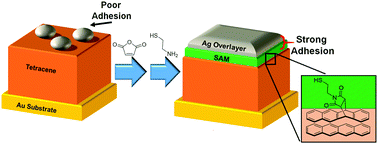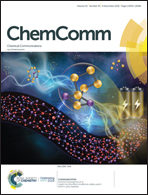Chemically transformed monolayers on acene thin films for improved metal/organic interfaces†
Abstract
Anhydride terminated acene thin films were chemically transformed to thiol or carboxylic acid functionalities, groups heretofore incompatible with monolayer reactions. The molecular surface imparts large rate acceleration when imides are formed, while disfavored disulfides can be formed from the thiols. The modified surface imparts improved adhesion to top metal contacts in flexible/bendable applications.



 Please wait while we load your content...
Please wait while we load your content...